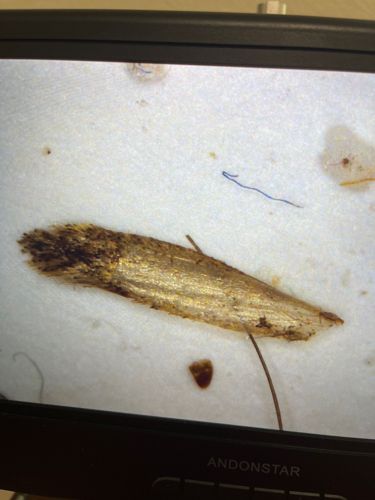Case-bearing Clothes Moth Larva Case
Scientific Name: Tinea pellionella (larval stage)
Order & Family: Lepidoptera, Tineidae
Size: Larval cases typically measure 1/8 to 5/8 inch (3-16 mm) in length. The larva inside is smaller.

Natural Habitat
Indoors, especially in undisturbed areas such as closets, attics, and storage spaces; prefers dark, humid, and warm environments. Often found near natural fibers like wool, fur, silk, feathers, and lint.
Diet & Feeding
Keratin-containing materials, including wool, fur, feathers, silk, felt, stored animal products, lint, and occasionally synthetic fibers if soiled with natural materials. They are scavengers of animal proteins.
Behavior Patterns
The larva lives within a silken, portable case, which it constructs from silk and fibers from its food source. It extends its head and thoracic legs from one end of the case to feed and move, dragging the case along. The case is enlarged as the larva grows. The larva is a slow mover and avoids light. Adult moths are typically poor fliers and prefer to crawl or hop.
Risks & Benefits
Potential risks: Clothes moths are considered pests, as their larvae can cause significant damage to clothing, carpets, upholstery, and other items containing natural fibers. They do not bite or transmit diseases to humans. Potential benefits: None significant from a human perspective; they may contribute to natural decomposition in outdoor settings, but are primarily known for their destructive indoor feeding habits.
Identified on: 9/5/2025